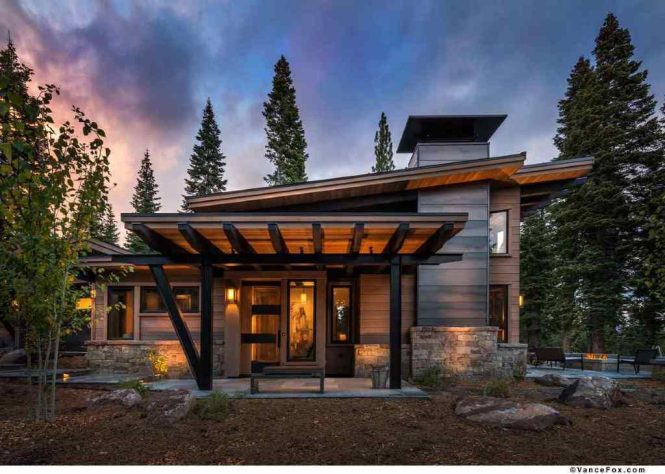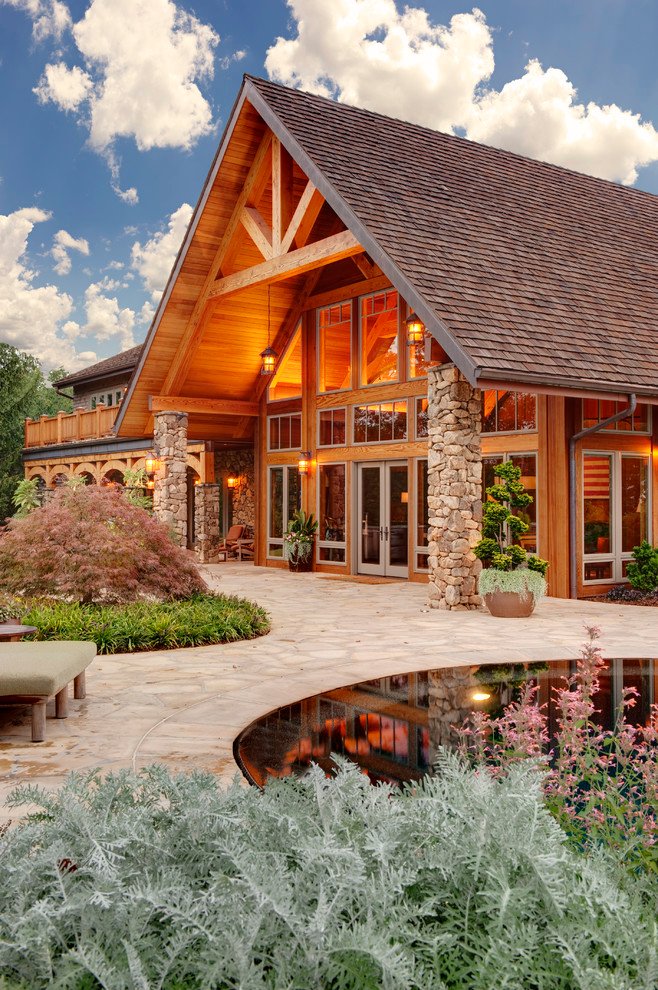

Rustic exterior design is gaining popularity as homeowners seek to create cozy and welcoming spaces that connect with nature. This style embodies the warmth of natural materials and timeless elegance, making it a timeless choice for modern homes. What does “rustic” even mean? Broadly, it refers to a style that evokes a sense of timelessness and closeness to nature. The core principle is to utilize elements that are natural, which often includes exposed wood, stone, or other organic components, giving the home an artistic aesthetic. Many homeowners are facing the challenge of blending the beauty of the outdoors with the functionality of the interior, and this article will explore how rustic design principles can solve this exact problem. This article will guide you through the key elements of creating a stunning rustic exterior, encompassing everything from material choices and color palettes to landscaping and outdoor living spaces. You will learn how to incorporate these elements to achieve a natural and cozy aesthetic, and will discover how to incorporate rustic style with modern architectural elements.
Understanding the Rustic Aesthetic
Defining Rustic Design Principles
Rustic exterior design is a style that embodies the warmth and charm of natural materials and simple yet stunning features. Key principles include a focus on natural materials such as wood, stone, and metal, often in their raw, unprocessed state. The palette often features earthy tones and warm colors, creating a cozy and inviting atmosphere. The emphasis is on functionality and durability, reflected in the robust construction and timeless design. An important key to success is making the exterior space feel more inviting and connected with the natural environment.
Bridging the Gap Between Inside and Outside
Creating a cohesive and inviting space means considering both the inside and the outside, creating harmony. The rustic design extends beyond the walls, integrating seamlessly with the surrounding landscape. This often involves the incorporation of outdoor living spaces and landscaping features to create an atmosphere of comfort and tranquility that extends beyond the home.
Selecting Natural Materials
The Power of Wood and Stone
Natural materials are essential to the rustic aesthetic. Wood, in its various forms (from reclaimed beams to barn wood), provides warmth and texture. Consider using different types of wood for variation in both appearance and feel. Using reclaimed or weathered wood adds character and depth that modern timber-frame homes might lack. Stone, in its varied forms, from rough fieldstone to smooth flagstone, offers a sense of enduring strength and rustic charm. These are important factors that make this design style stand out.
Other Materials for a Rustic Look
Beyond wood and stone, consider metal accents, such as wrought iron railings or metal hardware. These elements add a touch of sophistication to the rustic look while maintaining the overall design aesthetic. Metal elements are great for adding contrast to a home that’s mostly made of wood and stone, for instance.
Creating Cozy Color Palettes
Earthy Tones and Warm Hues
Rustic exterior design often embraces warm color palettes, reminiscent of nature. Earthy tones like terracotta, ochre, and burnt orange create a sense of warmth and coziness. Consider how these colors interact with the surrounding landscape. Natural greens, blues, and browns of nature can also be seamlessly incorporated into the color scheme, enriching the design. For instance, soft blues provide a pleasing contrast against warm oranges.
Accents that Complement the Palette
Introduce accents in complementary colors to highlight specific design elements. A vibrant green door or a touch of deep indigo shutters can add a striking touch of personality without disrupting the overall color scheme. Think carefully about how the colors complement each other and how they tie into the surrounding neighborhood.
Landscaping with Rustic Flair
Natural and Organic Shapes
Landscaping is a key element in completing the rustic look. Incorporate natural-looking elements like gravel paths, stone walls, and native plants to create a harmonious blend with the surroundings. Avoid overly manicured designs; instead, embrace natural, organic shapes and textures to establish a sense of peace and tranquility. Focus on the plants you select carefully and make sure they have a naturally rustic look. For instance, a well-maintained wildflower bed can evoke the charm and tranquility of a rustic garden.
Outdoor Living Spaces
Outdoor living spaces are perfect for extending the coziness of the interior to the exterior. A patio or deck, constructed from natural materials like wood or stone, is ideal for creating an outdoor seating area. Porches and gazebos provide additional opportunities to enjoy the fresh air. Consider using natural lighting as much as possible. This will add a sense of calm and connection to the outside world.
Incorporating Modern Elements
Blending Rustic with Contemporary
While rustic design often centers around natural materials, it’s possible to blend it with contemporary elements. Modern architecture can embrace the rustic design in unexpected ways. Large windows or open-plan designs that allow the indoor space to flow seamlessly with the exterior can enrich the space. This allows both indoor and outdoor features to interact smoothly.
Striking the Balance
The key is to strike a balance between traditional rustic features and modern conveniences. For instance, incorporating smart technology, like automated lighting or irrigation systems, can enhance the functionality of a rustic exterior without compromising the aesthetic. This balance gives the home a modern touch that will be appreciated by future homeowners.
Designing with Sustainability in Mind
Budget-Friendly Rustic Exterior Ideas
Key Considerations for Location and Climate
Working with a Professional Designer
Frequently Asked Questions
What are the key advantages of choosing a rustic exterior design?
Rustic exterior design offers a unique blend of natural beauty, timeless appeal, and lasting value. Natural materials like wood and stone tend to age gracefully, adding character and charm over time. Rustic designs are often more cost-effective to maintain than other exterior designs. In fact, this design can often improve a home’s value in the long run, as it appeals to a wide range of buyers.
How can I incorporate rustic elements without compromising modern functionality?
The key is to strategically blend traditional rustic elements with modern conveniences. For instance, integrating energy-efficient windows or smart home technology into a rustic design is possible. Incorporate modern architectural features like large windows and open-plan designs to create a sense of spaciousness and connection between the indoor and outdoor spaces. This allows the beauty of the space to be enjoyed to its fullest.
In conclusion, embracing rustic exterior design offers a charming and sustainable approach to home improvement. By focusing on natural materials, warm color palettes, and thoughtful landscaping, homeowners can create a cozy and welcoming atmosphere. Consider this design philosophy when planning your next home project. For further inspiration and to discuss your specific project needs, schedule a consultation with a local architect or design professional.